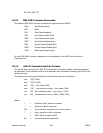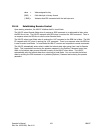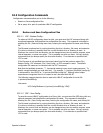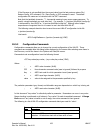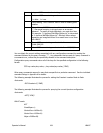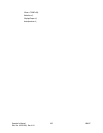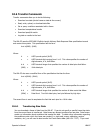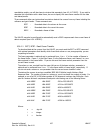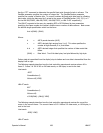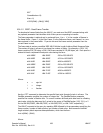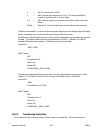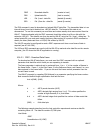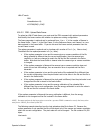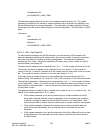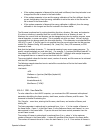Use the :FST? command to determine the specific fixed point format of pixels in a frame. The
PixelBits parameter specifies the number of integer bits. The PixelBitsFraction parameter
specifies the number of fraction bits. To convert a sixteen bit fixed point data word to a floating
point value, divide the data word by 2 raised to the power of PixelBitsFraction (128, 32, 8, or 2
for the LBA-300/708PC, LBA-400/710PC, LBA-500/712PC, or LBA-714PC respectively).
The LBA-PC responds to the query by repeating RCC or RCR followed by two parameters
specifying the frame number and number of data rows or number of data columns. Next comes
the definite length specification which has the form:
#nd..d(DAW)…(DAW)
Where:
# = ASCII pound character (0x23)
n = ASCII decimal digit ranging from 1 to 9. This value specifies the
number of digit elements, d..d, that follow.
d..d = ASCII decimal integer that specifies the number of data words that
follow.
(DAW) = Data Word. Two 8-bit data bytes, low byte followed by high byte.
Column data is transmitted from the display’s top to bottom and row data is transmitted from the
display’s left to right.
The following example describes how the host controller requests and receives column 49 in
frame 3. Frame 3 is 256 X 240 so 240 data words, or 480 bytes, is sent to the host.
Host sends
:RCC?
FrameNumber=3;
Column=49(^END)
LBA-PC sends
RCC
FrameNumber=3;
Column=49;
#3240(DAW)…(DAW)(^END)
The following example describes how the host controller requests and receives the row at the
cursor in the current frame. The current frame is 512 X 480 so 512 data words, or 1024 bytes, is
sent to the host.
Host sends
:RCR?(^END)
Operator’s Manual LBA-PC
188
LBA-PC sends



